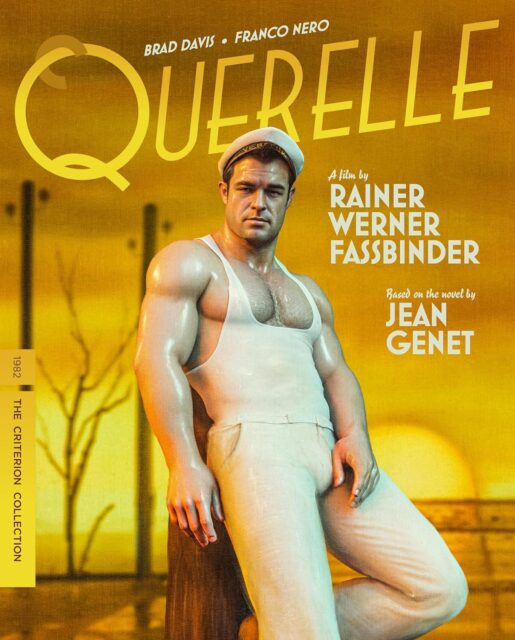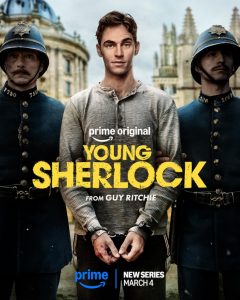
The post Home Video Hovel: Querelle, by Rudie Obias appeared first on Battleship Pretension.
During his short, yet prolific, career, New German Cinema director Rainer Werner Fassbinder made 44 films and TV dramas in just 15 years. In 1982, Fassbinder’s life was cut short from a drug overdose of cocaine and barbiturates at age 37. He was trying to stay awake through the night, so he could keep working on his next film. In the end, his work killed him.
However, although he didn’t plan for it to be his last film, Querelle would be his final one. Perhaps there’s a lot of importance that has been put upon the film since it was his last (the Criterion Collection is releasing the film a day after the anniversary of his death), Querelle is an oddity, as it examines masculinity, underground gay culture, and the fine line between passion and violence.
Based on French author Jean Genet’s 1947 novel Querelle of Brest, Querelle follows Belgian sailor Georges Querelle, played by Brad Davis (Midnight Express, Chariots of Fire), who is on shore leave with the other shipmates and Lieutenant Seblon, played by Franco Nero (Django, Mafia), of the ship Le Vengeur. On shore, he goes to Feria, a brothel run by Madame Lysiane, played by Jeanne Moreau (Jules and Jim, The Lovers), and his brother Robert, played by Laurent Malet (Viva la vie, The Possessed). Once there, Querelle begins to sell opium and embarks on a sexual awakening with statuesque and sweaty men, who are hyper-masculine in style (sailors, construction workers, bikers, etc.) that quickly turns violent and self-destructive.
Much like a lot of Fassbinder’s work, Querelle isn’t for everyone. It’s very unconventional in style and storytelling, while its entire look and feel are very aggressive — namely its staging and presentation. In fact, when the movie was released in the U.S. in 1983, it was panned by critics and even nominated for three Razzie Awards.
All of Querelle is filmed on soundstages that’s purposely dressed like a soundstage or stageplay. There’s not a moment throughout the film when you’re not reminded of its artificial backdrop, which is very much intentional. Even the film’s lighting and camerawork are aggressive with its garish orange and blue palette (think Lola and Berlin Alexanderplatz). In fact, the entire mise en scène can only be described as gay, again, with its hyper-masculine aesthetic and penis-shaped columns.
There is no fine line here, Fassbinder confronts audiences full on with his view of passion, sex, and violence in such a way that it feels undefined and almost as if he’s searching for something concrete and real — by showing something truly artificial. Querelle feels like it’s more about its ideas and themes than anything else.
As for the Criterion Collection release itself, Querelle really works in context to Fassbinder himself, so having two extended bonus features that go in-depth with the man and his work is worth watching this Blu-ray release.
The first featurette, which gives valuable insight, is an interview with Reverse Shot film critic and editorial director at New York’s Museum of the Moving Image Michael Koresky on Fassbinder’s work as a whole. And the other is German film director Wolf Gremm’s hour-long documentary titled Rainer Werner Fassbinder—Last Works, which takes a behind-the-scenes look at Kamikaze 1989, a futuristic cyberpunk film directed by Gremm and starring Fassbinder, and Querelle, Fassbinder’s last film. Both movies were released within a month of each other in 1982.
Querelle isn’t for the faint of heart. It’s bold, confusing, off-putting, and at times very ugly and violent. However, it has moments of beauty — albeit very few and far between.
The post Home Video Hovel: Querelle, by Rudie Obias first appeared on Battleship Pretension.
The post Home Video Hovel: Querelle, by Rudie Obias appeared first on Battleship Pretension.





